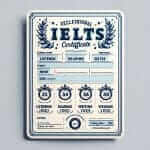The IELTS Speaking test often seems shrouded in mystery, leaving many candidates wondering, “How is the IELTS Speaking test graded?” As an IELTS instructor with over two decades of experience, I’m here to demystify the process and equip you with the knowledge to conquer this crucial component of the IELTS exam.
Understanding the IELTS Speaking Band Descriptors
At the heart of the IELTS Speaking assessment lie the band descriptors. These detailed descriptions outline the specific criteria examiners use to evaluate your spoken English proficiency across four key areas:
1. Fluency and Coherence
This criterion assesses your ability to speak smoothly and clearly, connecting your ideas logically and naturally.
- Fluency: Do you speak at a good pace, with minimal hesitation or self-correction?
- Coherence: Is your speech easy to follow, with clear transitions and logical progression of ideas?
2. Lexical Resource
Your vocabulary range and accuracy are crucial for demonstrating your command of the English language.
- Range: Do you use a variety of vocabulary, including less common and idiomatic expressions?
- Accuracy: Do you choose words that convey your meaning precisely and use them correctly in context?
3. Grammatical Range and Accuracy
This criterion evaluates your ability to use a variety of grammatical structures accurately and appropriately.
- Range: Do you demonstrate control over both simple and complex sentence structures?
- Accuracy: Do you make minimal grammatical errors, particularly in basic tenses and verb forms?
4. Pronunciation
Clear and understandable pronunciation is essential for effective communication.
- Individual Sounds: Are you able to pronounce individual sounds clearly and accurately?
- Stress and Intonation: Do you use appropriate stress and intonation patterns, making your speech engaging and easy to understand?
How Your Speaking Test is Graded
After your 11-14 minute interview, the examiner assesses your performance against each of the four criteria using the band descriptors. Each criterion is weighted equally, contributing 25% to your overall Speaking band score. Your scores are then averaged to determine your final band score, which ranges from 1 (non-user) to 9 (expert user).
Illustrative Examples from Real IELTS Speaking Tests
Let’s consider how these criteria might be applied in a real exam scenario. Imagine the examiner asks you about your hobbies.
Candidate A: “I like… uh… reading books. Because it’s… relaxing.”
Candidate B: “Reading is one of my passions! I find it incredibly therapeutic to lose myself in a captivating novel.”
Clearly, Candidate B demonstrates a higher level of fluency, lexical resource, and grammatical accuracy. Their pronunciation is also likely to be more engaging with appropriate intonation.
 IELTS Speaking Test Illustration
IELTS Speaking Test Illustration
Tips to Ace Your IELTS Speaking Test
- Practice, Practice, Practice: Speak English as much as possible, focusing on different topics and scenarios.
- Expand Your Vocabulary: Actively learn new words and practice using them in context.
- Master Grammar Fundamentals: Ensure a strong grasp of basic grammar rules.
- Record Yourself: Listen back to identify areas for improvement in fluency and pronunciation.
- Seek Feedback: Ask a teacher or language partner to evaluate your speaking and provide constructive criticism.
Conquering the IELTS Speaking Test
Remember, the key to excelling in the IELTS Speaking test lies in consistent effort and targeted practice. By understanding the assessment criteria, using the band descriptors as a guide, and implementing these practical tips, you’ll be well on your way to achieving your desired IELTS band score. Good luck!


